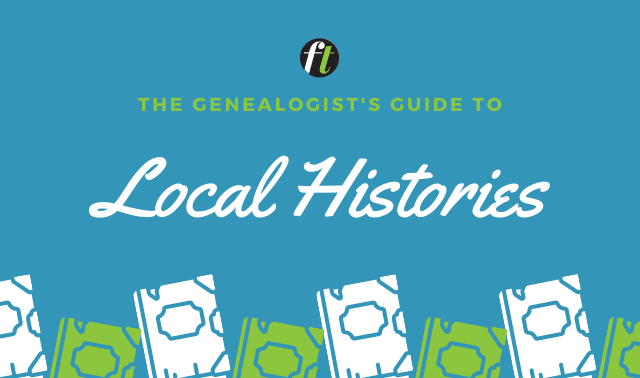Sign up for the Family Tree Newsletter Plus, you’ll receive our 10 Essential Genealogy Research Forms PDF as a special thank you!
Get Your Free Genealogy Forms
"*" indicates required fields

It’s both a blessing and a curse: We’re lucky that so many genealogy records are available online, but the frenzied pace of posting means new projects that are important to your research might escape notice. As fast as the good news appears, it fades, forgotten, into a sea of other family history headlines.
We need you to look here: We’ve gathered seven areas of exciting development in online records, where digitization and transcription efforts from organizations large and small are making your research easier and more productive. Where you once had to laboriously locate records in person, but you now have much-improved chances for success using just your computer. Start searching these new and growing online record collections today.
1. Birth and death records
A maze of bureaucracy and state laws governing the release of vital records, not to mention the request fees and wait times, can put your 20th-century ancestors’ birth and death data out of reach. But recent projects to post vital record images or (more commonly) indexes are increasing your chances of finding birth and death information on the web. If your results are from an index, use that information to request a copy of the document from the state vital records office or archive where possible.
A lot of the progress is made possible by Reclaim the Records, a nonprofit public records advocacy group founded in 2015 by genealogists, historians and journalists. The organization follows state freedom of information laws—and insists that state offices do the same—to obtain record sets that aren’t online or readily available to the public. In 2017, Reclaim the Records secured the release of an index to New York state deaths (outside of New York City) from 1880 to 1956. It took 17 months and a lot of back and forth with the state government, but you now can browse through the pages of the digitized index at Internet Archive. Subscription website Ancestry.com subsequently indexed the records so you can search them. The state death index has geographical gaps in several urban areas that kept their own records. Reclaim the Records also has requested records from those cities. Buffalo deaths (1842 to 1944) are currently available; Albany and Yonkers are underway.
Another acquisition is an index to New Jersey births and deaths from 1901 to 1903, as well as marriages from 1901 to 1914 (that’s the index by bride’s name; a grooms index covers 1901 to 1903). It’s now on Internet Archive.
The group also has actions pending for New York City birth certificates for 1910 to 1917, a New York State birth index for 1880 to 1942, and Missouri indexes to births from 1910 to 2015 and deaths from 1965 to 2015. Read more here.
2. Marriage records
In 2016, FamilySearch and subscription website Findmypast launched the US Marriages Project to index marriage records, targeting this record set because it usually provides a wife’s maiden name and sometimes even her parents’ names. You can search the indexed records on Ancestry.com, as well as FamilySearch and Findmypast. The latter site’s US Marriages Collection lists more than 100 million marriages from 1650 to 2010.
Subscription website MyHeritage offers the New York City Marriage License Index, 1908 to 1929, an index to marriage licenses from the five boroughs of New York that were filed at the New York City Clerk Offices. It includes more than 1.5 million marriage license records. For later unions, thank Reclaim the Records for another victory (read the whole sordid tale) in securing the release of an index to New York City marriages from 1930 to 1995.
Across the harbor, Reclaim the Records also negotiated the release of an index to 115 years of New Jersey marriage records, dating from 1901 to 2016. You’ll find it digitized here. The records aren’t searchable by name here—they’re browse-only—although there are index volumes. And now that the records are public, you can bet a big genealogy site will come along and turn the names into a database you can search.
3. Church records
Findmypast also is adding church records in its Catholic Heritage Archive, which in addition to marriages, includes baptisms and some death records. Recent and planned US additions come from the archdioceses of Baltimore, Philadelphia, New York and Cincinnati. You’ll also find church records here from England, Ireland and Scotland.
Those with Beantown ancestry, take note: The New England Historic Genealogical Society (NEHGS) and the Roman Catholic Archdiocese of Boston have announced a multi-year collaboration to create an online searchable database of millions of sacramental records from more than 100 parishes across greater Boston. You’ll find an index to these records on Ancestry.com, where you can link to the image at the NEHGS’ American Ancestors website (subscription required).
A couple of years back, after the National Library of Ireland posted free, digitized (but not searchable by name) Irish Catholic Church registers up to 1880, genealogy companies swooped in to index the records. You now can use searchable databases at Ancestry.com and Findmypast. At the latter site, the records are free to access.
4. Records of enslavement
The Digital Library on American Slavery is a good place to turn to if you’re searching for ancestors who were enslaved. Operated by the University of North Carolina at Greensboro Walter Clinton Jackson Library, this site indexes documents from other websites focusing on race and slavery in the American South: the Race and Slavery Petitions Project; North Carolina Runaway Slave Advertisements; and the Trans-Atlantic Slave Trade Database. A project called People not Property: Slave Deeds of North Carolina is under development.
While much of the material is North Carolina-based, the site has information from all 15 slaveholding states and Washington D.C. Sources include 18th- and 19th-century wills, estate inventories, court proceedings, runaway slave ads, deeds and bills of sale for enslaved individuals, and insurance registries (slaveowners would insure their slaves as valuable property). “We’ve pulled information from these other sites into a local database, so it’s faster to access what you’re looking for,” says site designer and digital technology consultant Richard Cox.
The advanced search function lets you add a date range, state and slaveowner’s name to your search. “Slaves often didn’t have last names, or names changed when they were moved to another plantation, so often you’re looking for a first name only,” Cox says. “That’s why it’s helpful if you have more information that can narrow down your search.” Search results direct you to the site the information comes from.
The library is working with partners who are looking to expand access to slave documents across the entire United States, and to distinguish African-American names. “When a certain name is found in different places, how do you know this person is one and the same person?” Cox asks. This partner-group will try to verify names to make that determination easier.
In June 2016, FamilySearch launched its volunteer-created name index to digitized Freedmen’s Bureau records, which document assistance the bureau provided to displaced persons after the Civil War. According to FamilySearch, it contains names of 1.8 million of the four million African-Americans who were enslaved.
Read more about these records in the January/February 2017 Family Tree Magazine. Another post-Civil War resource is the Last Seen database of newspaper advertisement placed by freedmen seeking family who’d been sold off during slavery.
5. Sanborn fire-insurance maps
Sanborn fire insurance maps, produced for roughly 12,000 US towns and cities starting in 1867, can show you how your ancestor’s neighborhood changed over time and provide information that’s essential for finding property records. You’ll discover street names that have since been changed and locations of buildings that no longer exist.
You used to have to go to a big library to find these maps. Then last year, the Library of Congress, which houses the largest collection of Sanborn maps, has posted more than 25,000 of them on its free website. Look for this collection to grow to 500,000 maps by 2020.
To search, type a place (city, county or state) into the box at the top of the page and click the magnifying glass. You might find that Sanborn published multiple sets of maps for your ancestor’s town, spaced years apart. Click a collection title to view the maps. For larger cities, look for a street guide or “index map” that tells you which page should show your ancestor’s street.
But the Library of Congress website isn’t the only place to find Sanborn maps. Check with local, state and university libraries for digitized collections. Maps for Indianapolis, Ind., for example, aren’t yet online at the Library of Congress, but you will find maps from 1887, 1898 and 1914-15 on the website of the Indiana University-Purdue University Indianapolis Library website. (They’re also accessible, along with other resources, via the state library’s Indiana Memory website) Similarly, Cincinnati maps for 1904 are digitized on the website of the Public Library of Cincinnati and Hamilton County. The Portal to Texas History has Sanborn maps from 173 counties in the Lone Star State.
You can use the Digital Public Library of America to connect you with the Library of Congress and other digitized Sanborn maps. Search for Sanborn map and the place, and in your search results, use the filters on the left to narrow your results if needed.
6. Burial records
Crowdsourcing technology and cemeteries’ advancements in online record-keeping are increasing the size of online burial databases like Find A Grave, BillionGraves and Interment.net. “We add 300,000 to 500,000 new records each month,” explains Steve Johnson, creator and manager of Interment.net. Unlike other online burial databases, however, this site isn’t completely crowdsourced. Users don’t edit or take ownership of records. “Our site sources records mostly from the sexton of each cemetery, so what you’re looking at is the actual record the cemetery’s office has, or what the cemetery was willing to provide.” It does contain some transcriptions from cemetery visitors. You’ll also find “Special Collections” lists of burials and deaths related to flooded cemeteries, mine disasters and the Woodmen of the World fraternal organization.
You can start your search by choosing a country tab at the top of the page and drilling down to a cemetery by location. Or use the site’s search form, which allows for name variants and misspellings. Check the Newest Transcriptions Published page for newly published records from your family cemeteries.
The longest-lived and perhaps the best-known cemetery database, Find A Grave—owned by Ancestry.com since 2013—relies largely on user-contributed gravestone inscriptions and other data. Take care when using biographical information and “calculated relationships” that may be in a memorial; site managers don’t independently verify this information. Find A Grave has undergone a recent makeover that’s somewhat controversial among long-time contributors, but should make burials easier to search on your phone.
BillionGraves, which began building its user-contributed database via mobile apps, is the largest source of GPS data for gravestones. Due to a partnership with genealogy website MyHeritage, the site and app are available in 25 languages, making them user-friendly to international contributors.
7. War of 1812 military pensions
These applications for pensions and bounty land are being posted for free at Fold3, in a project funded by the Federation of Genealogical Societies’ successful Preserve the Pensions campaign. After hitting a snag in 2017, conservation and digitization of the files have resumed; the collection on Fold3 is now two-thirds complete. Applications are based on military service between 1812 and 1815, and may include the original application form as well as affidavits and other supporting documentation.
From the March/April 2018 issue of Family Tree Magazine.
ADVERTISEMENT







